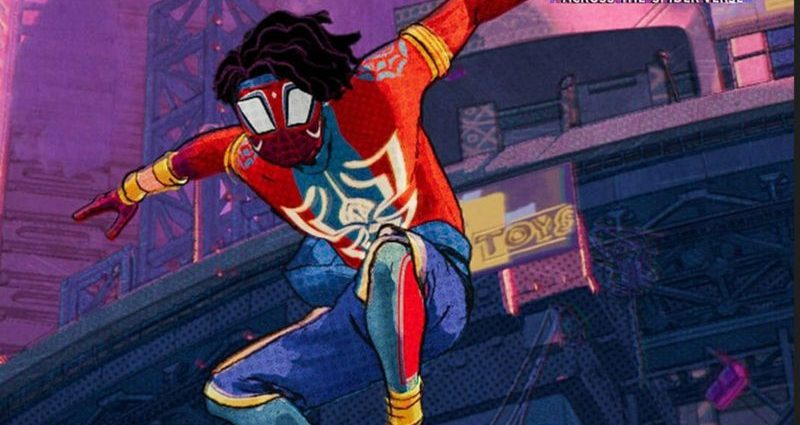
An Indian Spider-Man is making waves this summer as he swings onto screens in a dhoti (sarong-like garment), gold cuffs and an enviable mop of jet black hair, spouting cultural lessons for his guests from across the multiverse.
He appears in Sony Pictures’ Spider-Man: Across the Spider-Verse – which has spent recent weeks breaking box office records in India. It grossed $2.8m (£2.17m) in its opening weekend alone – the highest debut for an animated film in the country.
That might not come as a surprise, given the popularity in India of Spider-Man – one of the few characters from the West’s comic book universe to make an impact in a country where pop culture is largely dominated by the Hindi film industry.
The superhero’s films have been among the top-grossing Hollywood films in India since 2007, spawning numerous local knock-offs. This includes a love song, whose funny lyrics – “Spider-Man, tune churaya mere dil ka chain” (Spider-Man, Spider-Man, you stole my heart) – have earned a cult status in the country.
But the latest film is a lot more special because it features an Indian version of the superhero for the first time ever.
Meet Pavitr Prabhakar, a messy teen who guards the streets of Mumbattan – a mashup of Manhattan and Mumbai. His name is a play on Peter Parker, the teen behind the original Spider-Man mask.
Pavitr is among the five different spider stars – all from alternate realties but connected through their shared powers – who team up with teen hero Miles Morales to stop a wily supervillain.
Pavitr’s depiction has been praised by fans across the world, especially Indians who’ve been won over by his exuberant personality.
Some have fallen in love with the tropical, curvy art-style for the Mumbattan sequence of the film – an homage to the Indrajal Comics from 1970s, an Indian imprint known for publishing stories about the Phantom and Mandrake the Magician in regional languages.
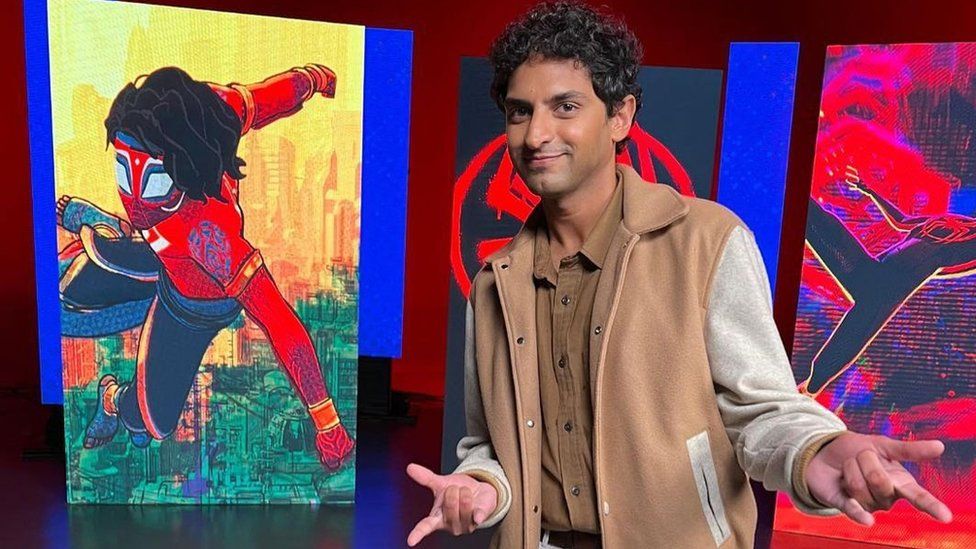
Others have praised the way the film bands together characters of different backgrounds to create a first-of-its-kind multi-ethnic team of superheroes.
“First Marvel gave us first black Spider-Man, Miles Morales and now we have Pavitr. The story is trying to touch on an exciting idea: that anyone can be Spider-Man,” says Mrityunjoy Pal, an ardent comic fan.
While Pavitr is new to many viewers in India and abroad, his origin story goes back decades, a time when the superhero scene in the country was confined to a niche community of comic book enthusiasts.
The character made his first appearance in Spider-Man: India #1 in 2004 – a comic book which sold over a million copies in a run that lasted four issues.
The comic book sticks to Spider-Man’s universal premise of a friendly neighbourhood superhero.
Like any teenage boy with competing priorities, Pavitr struggles to balance homework with his hero work. At school, he is mercilessly bullied – but at night, he transforms into a crime-fighting superhero who swings past skyscrapers with superhuman speed. He dons the mask to protect the one he loves, and for that he must keep his identity a secret.
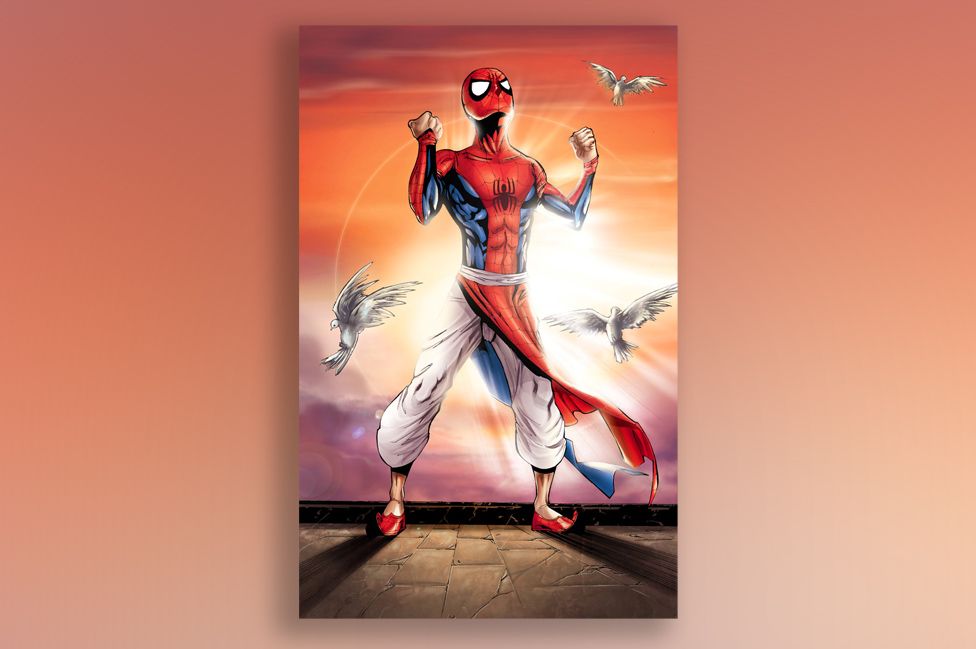
But Pavitr’s story also comes with a special Indian twist. He is a chai-sipping, dhoti-wearing superhero who gets his powers from a yogi – a mystic guru – and not from a radioactive spider bite.
Instead of being smitten with Mary Jane, the girl-next-door, Pavitr has a crush on his classmate Meera Jain. And unlike Peter Parker, who is bullied in school for being a “bookworm”, Pavitr is a scholarship student from a small village who is ridiculed for his appearance.
He is an “Indian Spider-Man” made by Indian creators. That is what Sharad Devarajan and his co-creators Jeevan Kang and Suresh Seetharaman said when they first conceptualised Pavitr in 2003.
“We chose to play on the larger social allegory of having Pavitr be a village boy who feels out of touch with the Mumbai elite because it was reflective of what we saw in 2004 when big cities seemed to be moving at light speed while many of the people in rural India felt completely separated,” Mr Devarajan told the BBC.
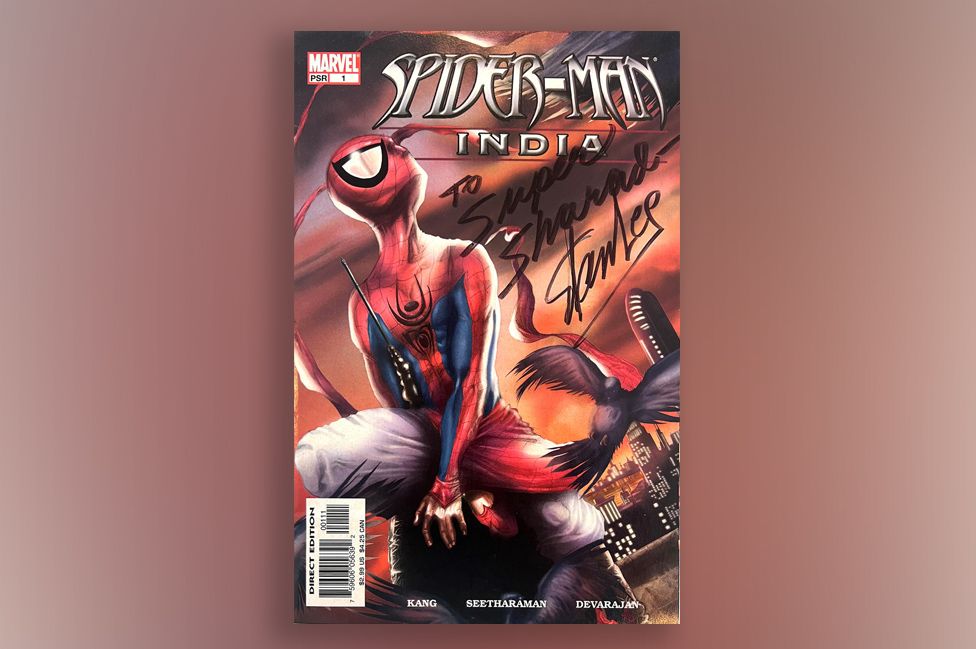
The Spider-Verse introduced audiences to a cast of diverse Spider-people from different race and gender backgrounds: Morales, who is of African and Puerto Rican heritage; Miguel O’Hara’s Spider-Man who is of Mexican descent; Jessica Drew, Marvel’s first pregnant superhero; and Hobie Brown’s Spider-Punk who is of African descent.
But back in 2004, reimagining an icon such as Spider-Man was a lot more challenging, especially for an Indian audience who, Mr Devarajan explains, had seen images of the character but did not know his story and had not read any comics about him.
India has always had a vast appetite for comic books – which are a common sight at grocery stores, newspaper sellers and railway platforms. They have been made popular by visual retellings of mythological stories in Amar Chitra Katha, and weekly children’s magazines like Twinkle and Champak.
“There has been a tremendous interest in history and mythology, and most of our comic books and books fall in those two genres,” says Jatin Varma, founder of Comic-Con India.
But the country’s appetite for superheroes is more recent. Some of this could be because the space has traditionally been dominated by heroes of Indian cinema. These films offer a spectacle with bombastic storylines that see male leads dodging bullets, jumping off rooftops and fighting dozens of goons to save the day.
“Our aim was to simply turn an international hero into a local icon,” Mr Devarajan said. “A relatable guy who swings from the Gateway of India over city streets in Mumbai and celebrates Diwali with his aunt.”
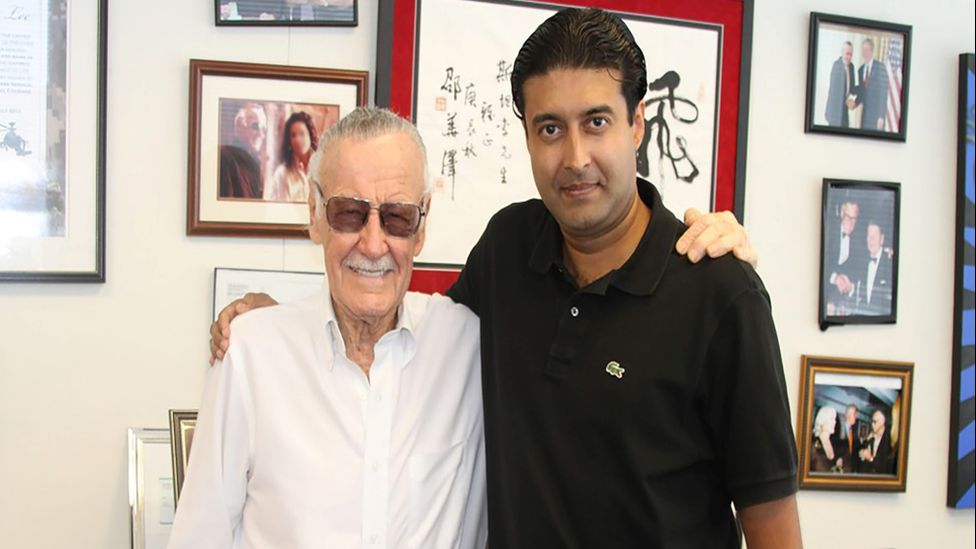
Twenty years on, Pavitr is doing exactly that – and more.
In the film, he ditches the white dhoti for a more stylish blue one – which he pairs with a funky suit decorated with intricate Indian motifs, and a cool hard-part haircut.
Even his character – which in Mr Devarajan’s words “represented the more traditional and simple family value system of Indians” – undergoes certain modifications.
Unlike Miles, who is worn down by the anxiety of his powers, Pavitr is unshakably optimistic as he swings through the chaotic vistas of Mumbattan with cool remove.
His self-assured and confident side drives the plot on several occasions. During a tour of Mumbattan, he says: “This is where the British stole all our stuff.”
He even makes fun of Miles for requesting “chai tea” (which is like saying he’d like a cup of “tea tea”), and quips: “Would I ask you for a coffee-coffee, with room for cream-cream?”
In an interview with Variety magazine, Kemp Power, one of the film’s three directors, said the team “literally re-broke Pavitr’s sequence and reimagined his character” mid-production, after some animators of Indian descent working on the film felt that Pavitr needed to be more authentic.
“It really spoke to the spirit of collaboration on this movie,” he said.
Mr Varma says even though the film caters primarily to an audience outside of India, the cultural elements do not feel lazy or stereotypical. “And the fact that this Indian Spider-Man was part of arguably one of the best Spidey movies, made it even better.”
Mr Devarajan says the film “changed the costume, but the heart, character and unique Indianess of Pavitr remain the same.”
He hopes this is just the beginning for Pavitr’s growth as a character in the Marvel world.
“It only took 20 years for Pavitr to jump from that comic we created and onto the big screen,” he says.
“Hopefully it won’t take another 20 before we see the live action version. India needs its Spider-Man!”

